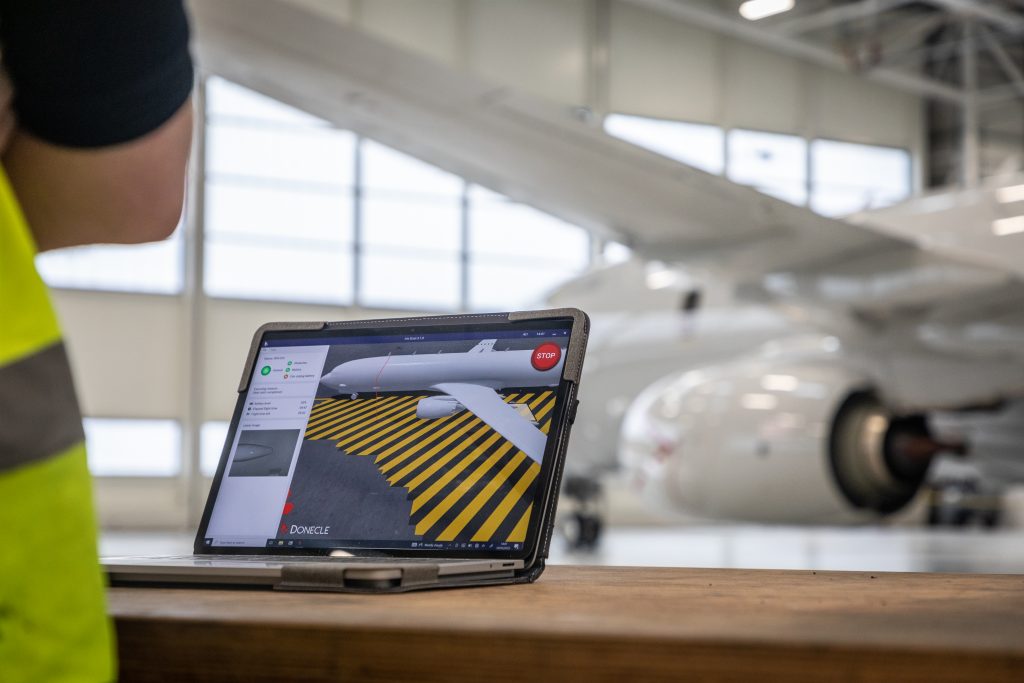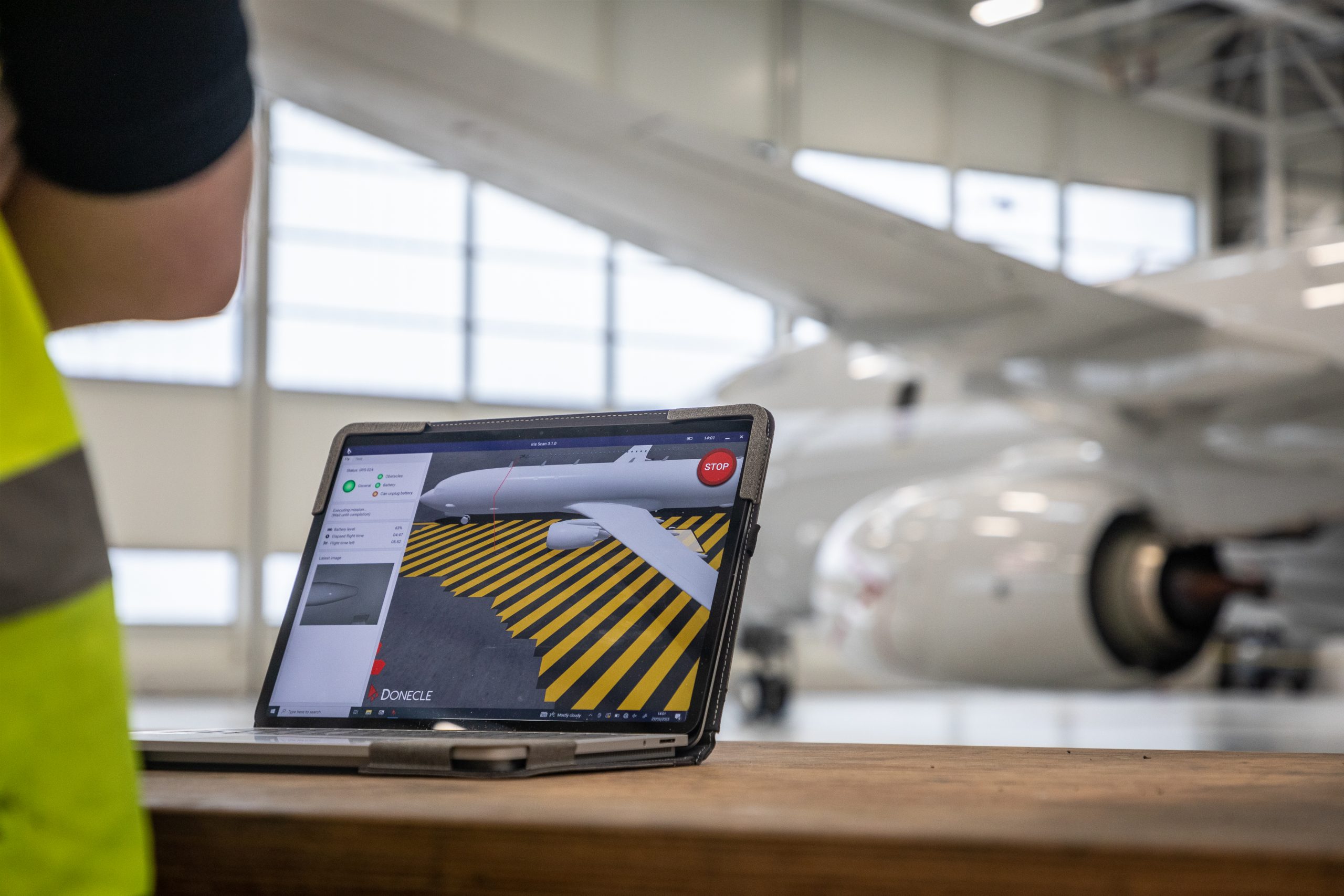
The technical evaluation, known as Project ASURVEY, is funded by Astra and aims to use drone technology to carry out some of the crucial aircraft inspections that take place before and after every flight.
Currently this is performed manually, with engineers visually inspecting the exterior of the aircraft a process that hasnt really changed in the last 40 years. It is hoped that this innovative solution will enable the process to be completed more efficiently, with 95% of the exterior of the aircraft scanned in just half an hour, and without the need for engineers to spend long periods working at height.Photo MOD Crown Copyright 2023 AS1 Aeris Finney RAF
The RAF has begun a technical evaluation of using a drone to support aircraft engineering tasks.
The technical evaluation, known as Project ASURVEY, is funded by Astra and aims to use drone technology to carry out some of the crucial aircraft inspections that take place before and after every flight. Currently this is performed manually, with engineers visually inspecting the exterior of the aircraft – a process that hasn’t really changed in the last 40 years. It is hoped that this innovative solution will enable the process to be completed more efficiently, with 95% of the exterior of the aircraft scanned in just half an hour, and without the need for engineers to spend long periods working at height.
The initial evaluation will take place using a specialist Donecle drone to survey the Poseidon MRA1 aircraft at RAF Lossiemouth. Engineers have completed intensive training to operate the drone safely around the aircraft in the hangar and are now assessing the data it can provide. Next is the arduous process of teaching the drone the intricacies of every aircraft, which will allow it to identify any areas of damage, rapidly and accurately. This has the potential to save many hours of work and quickly return aircraft to the flight line.
Flight Sergeant Andy Fleming, whose creative idea it was, is managing the project. He explained, “There’s a real excitement around this technical evaluation and what it can potentially offer to the RAF. Now the drone has been delivered, we’ve started training the right people on how to safely operate it around an aircraft in a hangar. The next step is to teach it the specifics of each tail number so it can clearly identify even the smallest areas of damage. It’s great to see the RAF embracing the cutting-edge inspection technology available, to streamline and improve inspection processes”
Matthieu Claybrough, Co-founder of Donecle who manufacture the drone, explained, “Drones can make maintenance inspections faster, safer, and more reliable while increasing aircraft availability. We’re really excited about working with the RAF on this project and hope it will help to demonstrate the capabilities that these innovations can bring to military engineering.”
The drone uses a Basler Ace 2 PRO 24MP camera to capture over 1300 images, producing around 5Gb of data per scan. Part of the evaluation will assess how the RAF can make best use of the data to bring even greater efficiency to RAF engineering capabilities.
If the technical evaluation is successful, it could be rolled out for use on other aircraft across the RAF. It could even mean that those joining the RAF as engineers now may routinely be using drones in their daily work.

